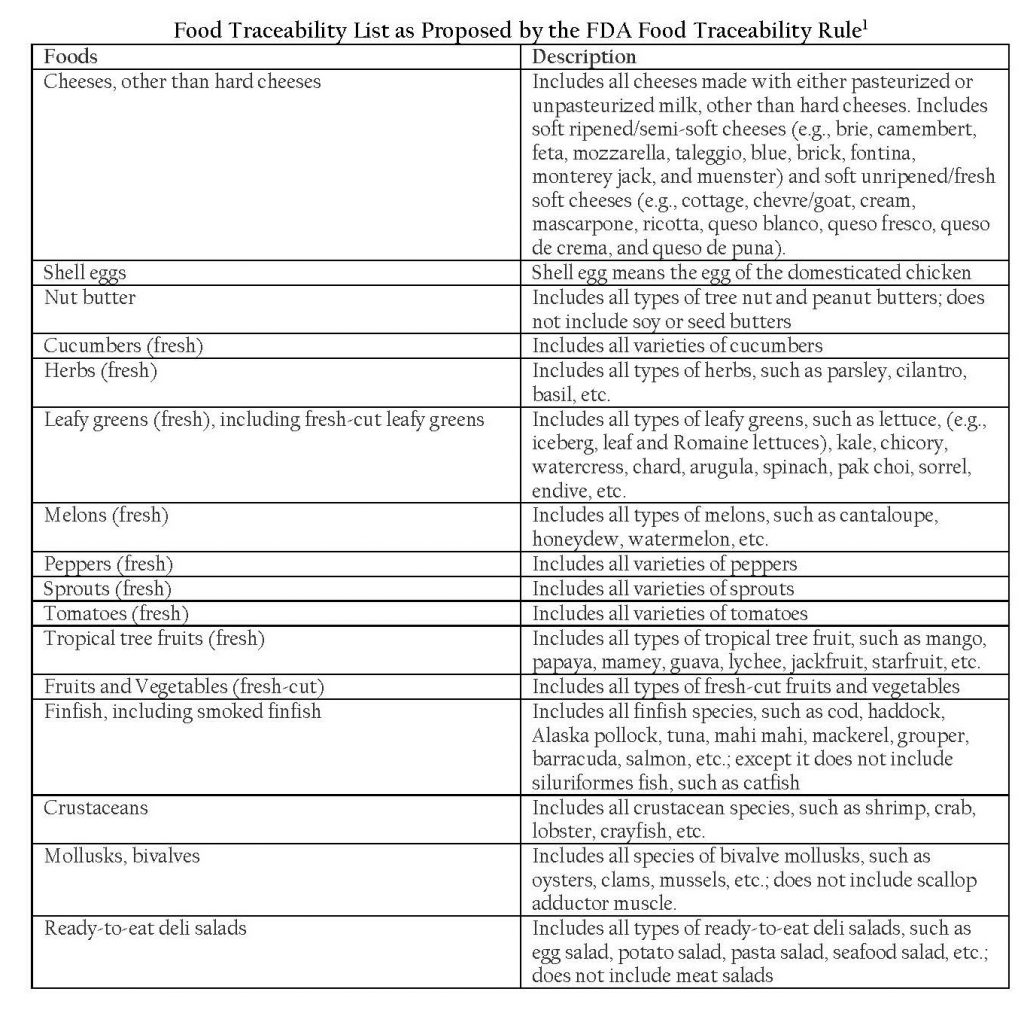Food Traceability in Foodservice Operations: An Essential, and Soon-to-be Required, Component of your Food Safety Plan
In June, I discussed the importance of having a solid food defense plan, and I provided you some resources for developing or strengthening your food defense plan. As I was writing those blogs, my mind kept turning toward food traceability. While they are distinctly different concepts, food traceability goes hand-in-hand with a food defense program. I would argue for your food defense plan to be effective, you must have an effective internal food traceability program, where you can trace the product back to the supplier (backward traceability), but also be able to trace the product from the supplier to the guest who was served the product (forward traceability).
Forward traceability is often the most difficult for foodservice operators. If you are a commercial restaurant operator, this can be extremely difficult if the guest pays with cash, where you have no records to track who dined in your establishment, let alone what food they may have consumed. In schools and other on-site feeding establishments, it can be made difficult due to the sheer number of guests/students fed daily. You might be able to track who dined in your operation on a particular day, but it generally gets a bit more complicated when you try to answer the question of which guests had a certain product from a particular case or lot number.
For several years, the U.S. food supply was only required to have a one-step forward and one-step back traceability. This meant you had to know where your product came from and where it went once it left your operation. The Food Safety Modernization Act provided the groundwork for the Food and Drug Administration to designate foods for which additional record keeping is required to protect the public health. The New Smarter Era of Food Safety Blueprint, laid out by the Food and Drug Administration included improved traceability as one of the four key elements, along with smarter tools and approaches for prevention and outbreak response, new business models and retail modernization, and food safety culture. These four elements serve as the building blocks for a more digital, traceable food system.
If you think that the changes to traceability will not impact your foodservice operation, think again. While it could still change, I would expect some changes to be coming to the traceability landscape for foodservice operations in the coming years.
If you think that the changes to traceability will not impact your foodservice operation, think again. While it could still change, the proposed rule provides only a few exemptions for foodservice operations. Two of the exceptions require the foodservice operation to have 10 or fewer full-time equivalent employees. Another partial exception is in place for schools who participate in farm-to-school programs under the guidance of USDA, but the rule would require them to maintain records of where the product was sourced for a minimum of 180 days.
Fundamentally, the proposed rule would require those who manufacture, process, pack, or hold food on a designated food traceability list to establish record keeping data of key elements associated with various Critical Tracking Events. Foods currently on the list are included in the table below.

The end goal of the Food and Drug Administration is to improve the tracking of food to enable end-to-end traceability. To achieve this, records for food product will need to be linked. If a foodborne illness outbreak were to occur, the foodservice operation would be required to provide traceability records in the form of an electronic, sortable spreadsheet to the Food and Drug Administration within 24 hours.
While the proposed changes are currently just that – proposed, I would expect some changes to be coming to the traceability landscape for foodservice operations in the coming years. If the proposed rule is accepted, it would become effective 60 days after publication in the Federal Register. Compliance date for the food industry would be two years after that date.
If you would like to learn more about food traceability, why it is important, how some foodservice operations have embraced traceability, and some tips on getting started – join us for our July SafeBites webinar where I will be presenting more information on Traceability. It is scheduled for July 21 at 1:00 pm. We would love for you to join us.
I hope you have a great 4th of July weekend. Be safe as you travel and enjoy family and friends. Risk Nothing.
[1] Source: Food & Drug Administration. (2021, July 1). FSMA Proposed Rule for Food Traceability. Food Traceability List. Available at: https://www.fda.gov/food/food-safety-modernization-act-fsma/fsma-proposed-rule-food-traceability
READ MORE POSTS
Emergency Preparedness and Responding to a Disaster with Food Safety in Mind
As I write the first blog this month, the realities of the devastation in Florida are coming to light as we also deal with the aftermath of Hurricane Fiona, which impacted Puerto Rico late in September. Recent news has been focused on the recovery efforts for all who have been impacted. Thus, I thought it would be fitting this month to discuss emergency disaster planning resources in our first blog and delve into recovering from a disaster in our second blog later this month.
During National Food Safety Education Month is it time for Your Food Safety Refresher?
You see them in every restaurant and commercial foodservice operation across the United States. Framed and proudly displayed, often by the kitchen, the cashier, the kitchen entrance, or the service counter - just as they should be. To what am I referring? The food safety certification certificates, of course!
Welcome to National Food Safety Education Month!
In September of each year, we not only have the opportunity to celebrate Labor Day, but we also welcome National Food Safety Education Month! It is this time of the year when it is important to remember that Foodborne illnesses are still a major concern in the United States, although I am guessing many Americans don’t think about the safety of the food they eat as they go throughout their daily lives. The statistics show one in every six Americans will suffer from a foodborne illness each year, for a total of about 48 million cases each year.
Protecting Fresh Produce Post-Harvest, Integral to Safe Food
During the height of the summer, at least in the Midwest, farmers markets are in full swing and fresh produce is plentiful. Every backyard gardener is reaping the benefits of their work, with bountiful harvests of tomatoes and cucumbers. Everyone seems to have a neighbor who is trying to pawn off his or her over-production of cucumbers or summer squash during this time of year. When picking up that produce at the farmer’s market or from your neighbor down the street, have you ever given any thought to the microbial safety of it? Honestly, even in my position, it certainly is NOT the first thing that comes to my mind. But, earlier this month, I came across a news story out of Wisconsin discussing a Salmonella outbreak associated with shelled peas sold at a local farmers market. Who would have thought shelled peas would be impacted? The story noted, and it served as a great reminder, that most outbreaks associated with Salmonella in produce are due to mistakes made in handling or transportation of produce after harvesting.










